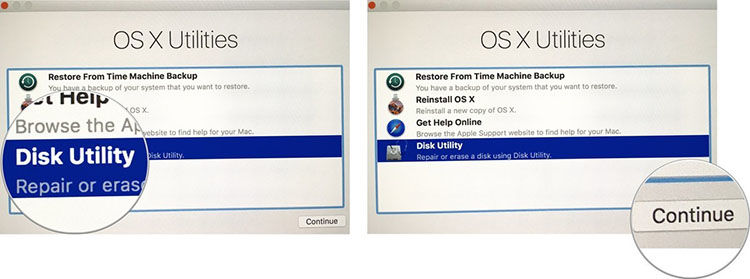

- #Downgrade mac os without ereasing data how to
- #Downgrade mac os without ereasing data install
- #Downgrade mac os without ereasing data software
Note: If you have an Apple M1 Mac, you can't revert it from macOS Big Sur to Catalina or another earlier version of macOS because Big Sur is delivered originally.
#Downgrade mac os without ereasing data install

There's one thing you should pay attention to - check if the macOS you want to downgrade to like Catalina is initially shipped with your Mac. This method is suitable for any Mac model at any age to downgrade macOS without a Time Machine backup. You can boot your Mac into Recovery Mode to revert macOS.
#Downgrade mac os without ereasing data how to
However, if you have no Time Machine backup, how to downgrade macOS? Then, your Mac mini or another model will automatically restart running macOS Catalina or the other macOS you've rolled back. The restoring process will take some time.

Downgrade Mac OS with a Time Machine backup It's up to your situation and preference. The erasing process will take a while, don't do any other operation during the process, or the internal hard drive may be damaged.Īfter backing up your Mac and erasing your Mac, you can get down to downgrade from Big Sur to Catalina or from Monterey to Big Sur by one of the following methods. Set a name, choose APFS in the Format: box.Choose the macOS volume and click Erase.Then, right-click the macOS-Data volume and click Delete APFS Volume. How to Fix Mac Recovery Mode Not Working.Restart your Mac and press and hold the Command + Option + Shift + R keys until the Apple logo appears (or the spinning globe) to boot into macOS Recovery mode.Usually, the startup volume erasure task should be taken in macOS Recovery mode. Sluggish performance of your Mac after macOS reversion.If you don't wipe the Mac hard drive, you'll face issues like: Why? Because erasing your Mac hard drive is to make room for the older macOS you'll install. Erase your Mac (Necessary)Īfter you've backed up your Mac, it's time to wipe all data on your Mac hard drive. Or write down all the accounts and corresponding passwords. To save your passwords, you can check in Keychain in iCloud when using it to back up data. Notably, macOS reversion will also erase all the passwords you used in the current OS, like passwords for apps and networks. Or, you can back up your Mac files with Time Machine for restoring after rollback the macOS update. If you want to back up all data on your Mac, you can synchronize it to your iCloud if there's enough storage space. If you only have a few files, copy them to an external drive as a backup. Thus, you need to back up your Mac in advance.

The macOS downgrading process will erase all data on your Mac. If you regretted upgrading macOS because of its massive changes and frustrating issues, uninstalling macOS will eliminate your annoyance and bring you a fluency experience.
#Downgrade mac os without ereasing data software
Moreover, you also have to accept the macOS 11 Big Sur updates issues or the new macOS Monterey problems like software incompatibility and Finder springs back horizontal scrolling. Upgrading to the latest macOS Big Sur requires you to adapt its new features and redesigned look. Downgrade macOS with Time Machine backups (If had) Here's how to downgrade macOS Monterey, Big Sur, or earlier version: The ways in this article are suitable for downgrading from Big Sur to Catalia, from Monterey to Big Sur, or an older version of macOS. This article gives you three ways to downgrade Mac OS without data loss, even if you don't have a time machine backup. You may have the question: "Can I downgrade my macOS version?".


 0 kommentar(er)
0 kommentar(er)
